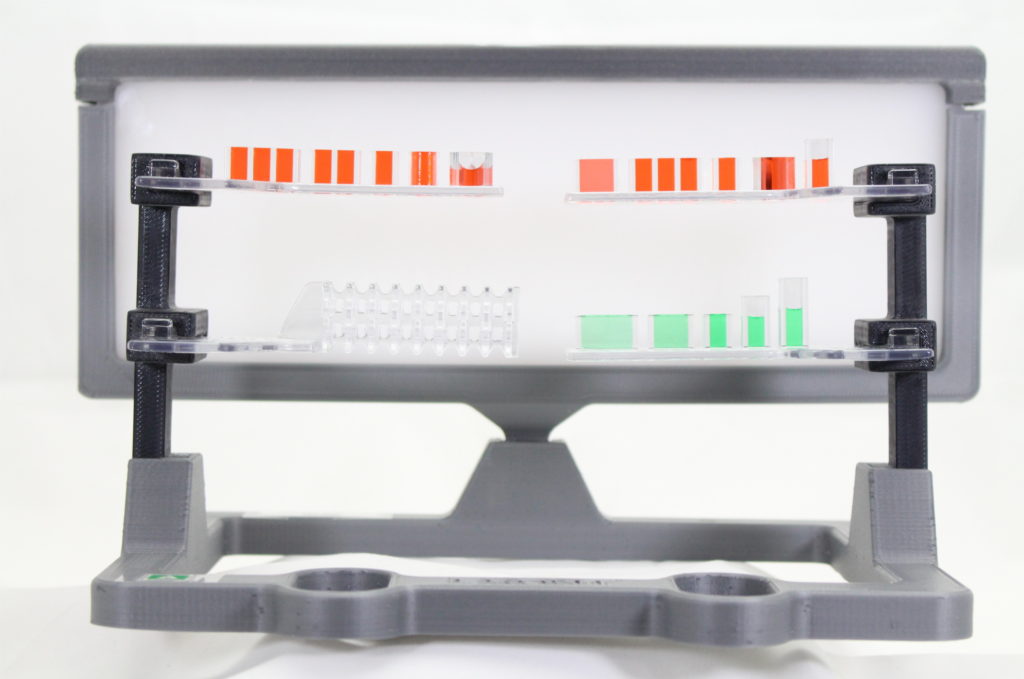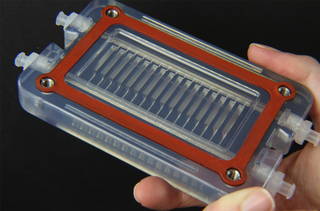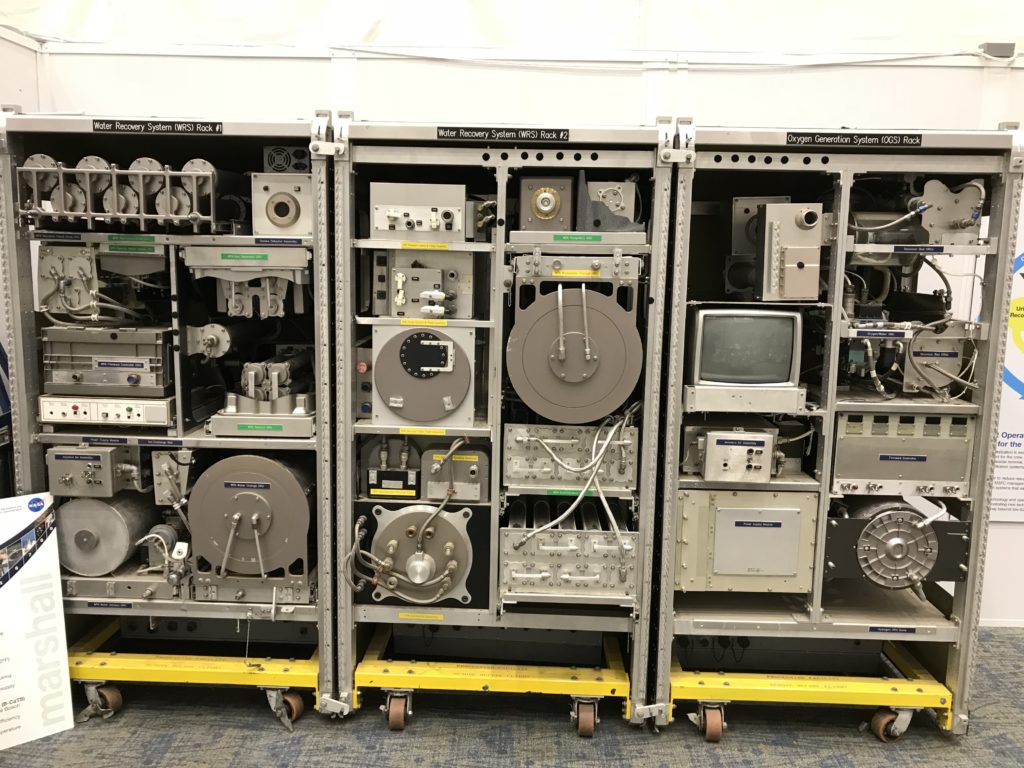
Capillary Evaporator prototype with transparent capillary structures filled with test fluids. Credits: IRPI LLC
Human use a lot of water for drinking and hygiene. Recycling is a key strategy to make the water that is launched into space last longer. Existing water recycling methods in space use harmful chemicals or considerable energy, and do not recycle 100% of the water. Reliability is crucial as well. So the search continues for new approaches to improve the water recycling process.
NASA is considering capillary structures for water recycling. Capillary action involves electrostatic forces literally pulling water through small tubes, similar to how drops of water will hang on objects despite the force of gravity pulling them away. NASA’s capillary structures investigation studies “a new method of water recycling and carbon dioxide removal using structures designed in specific shapes to manage fluid and gas mixtures in microgravity.” The capillary structures equipment is made up of small, 3-D printed geometric shapes and sizes sizes (see above image).
This investigation also involved evaporation. “If you could do controllable evaporation in space, you could do all kinds of things” said Mark Weislogel, one of the project’s principal investigators. “You could evaporate urine and recover all of the water. All of it. If you had a way of holding the liquid in a passive, no-moving-parts way like a puddle does on earth, but in space, then you could do a lot of unique processing, safely and with no maintenance.”
Just as with the capillary investigations, the evaporation “structures are set up to have different geometries, different angles, different heights, all these different parameters that we are varying across these structures to get quantitative data of evaporation in low gravity,” according to Kyle Viestenz, co-investigator for the project.
“If you could do controllable evaporation in space, you could do all kinds of things” said Mark Weislogel, one of the project’s principal investigators. “You could evaporate urine and recover all of the water. All of it. If you had a way of holding the liquid in a passive, no-moving-parts way like a puddle does on earth, but in space, then you could do a lot of unique processing, safely and with no maintenance.”
Another part of the investigation demonstrates the use of fluids in a carbon dioxide removal system, called the Carbon Dioxide Liquid Sorbent System. This system uses a network of “water falls” to bring a material used to absorb gases, into contact with air, allowing the carbon dioxide to be carried away by the liquid. In a microgravity environment, the liquid does not “fall,” but is driven by surface tension forces generated passively by the unique surface geometry of the capillary structures.
It is unknown if or when this technology would be deployed.
Further Information:


